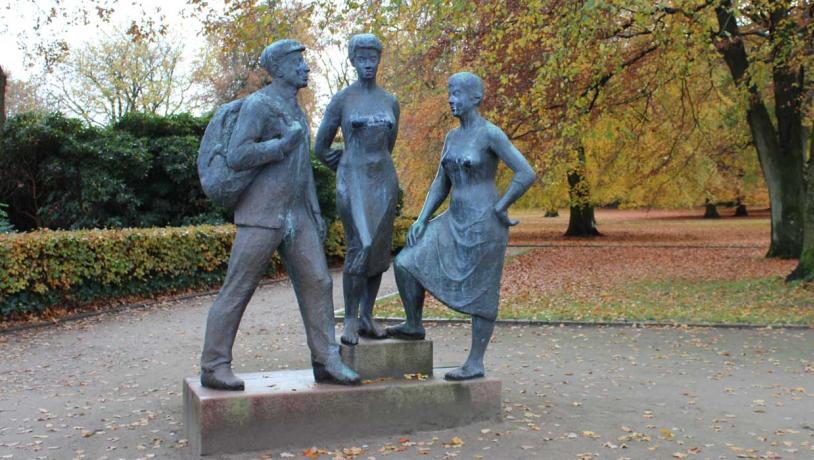Elia
Elia is a big sculpture in Herning.Cronhammars giant skulpture, ELIA is a mark of the new millenium. But the sculpturer is also a manifest of the will...
Kunstlandet is our collective narrative about art, distributed across numerous locations within the destination. It’s a story for you, about who we are and how we experience and live with art in our everyday lives and urban spaces.
Photo:Stefan Steinn
We hope you'll take the time to experience how diverse our art encounters are. From large sculptures where moss thrives vibrantly, to beautiful paintings on chalk-white museum walls, art is here to be seen, discussed, and experienced. Our art is meant for inspiration, reflection, beauty – and its opposite.
There's room for new ideas and exciting initiatives. That's why new art is always on the horizon, sculptures are moved around, and a town square undergoes transformation.
Kunstlandet has its roots back to the industrial history of the early 20th century, when a small group of young people initiated the Central Jutland textile adventure. This endeavour later employed thousands of people and provided opportunities for creating and acquiring art. Art on factory walls, sculptures in urban spaces, and collections that became the foundation for new museums and institutions.
Ambitious goals and grand gestures seem to resonate with us here in Central Jutland. Art was meant for the working people, to nourish the soul. It was also a means to modernize a place in Jutland that was one of the poorest regions in Denmark until the industrialization of the 1900s. Both Herning and Ikast are relatively new towns that grew with the migration from rural areas and the establishment of numerous backyard factories that gained momentum in the 1930s.
Photo:VisitHerning
The rural youth achieved success. One of them was Aage Damgaard. Together with his wife Bitten Damgaard, he used his success to hire artists for decorating the factories, but also to create works while they were here. Some artists lived in periods at Herning Folk High School, which the manufacturers established in 1961. According to Aage Damgaard's own words, they started the high school for the following reason:
Today, the folk high school has transformed into a cultural hotel. A hotel that has been thoroughly renovated, showcasing the original architecture and art created for the place in an excellent manner.
The folk high school began with collaboration, and collaboration still characterizes Kunstlandet today. Collaboration rooted in our shared history, but moving swiftly towards new chapters for art.

Photo:VisitHerning
Our art land is still a place where there's room to experiment and give space to new ideas and initiatives.
Local initiatives were also strong in Brande in 1968. Sometimes, there are people who create art that isn't immediately understood. In Brande, there was commotion over an idea two locals had, where they engaged artists to paint on the town's gables. And not images of cows by forest lakes, but surrealism, abstract and all sorts of modern and perhaps incomprehensible art. It was referred to as "an advanced experiment in a railway town." Today, gable art is a part of Brande, and Brande is a part of art. Now, they aren't unintelligible anymore. Now, the two – the town and the art – are connected and inseparable.
There are many more stories and details to discover on your tour in Kunstlandet. Enjoy!
You can experience the art on your own, or you can let us assist you along the way. We have put together both short and long routes that will safely guide you from artwork to artwork. If you use our experience app, "VisitHerning Explore," you can also get told little stories.